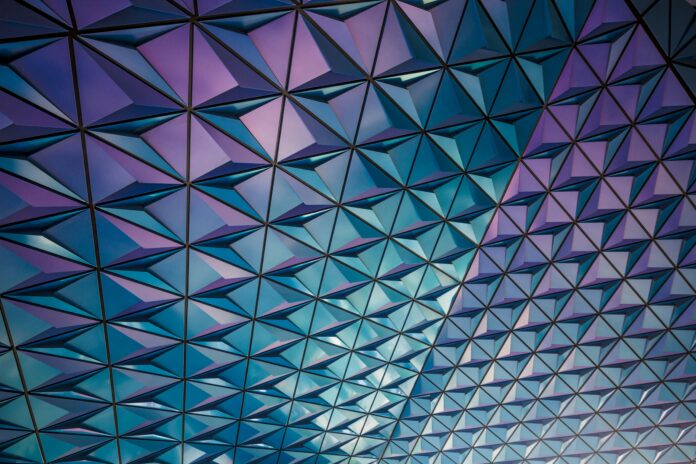In the modern apparel industry, understanding AI in the Fabric technology in fashion is no longer optional—it is essential for brands that want to innovate, compete, and succeed. From revolutionizing textile design to optimizing production efficiency, AI in the Fabric technology in fashion is transforming the way fabrics are created, tested, and integrated into final garments. By combining data science, advanced algorithms, and material innovation, AI in the Fabric technology in fashion has opened the door to sustainable practices, higher-quality materials, and consumer experiences that were once unimaginable.
1. AI-Driven Fabric Design and Pattern Creation
One of the most groundbreaking changes AI has brought to fabric technology is in the realm of design. Traditionally, fabric patterns and textures were created manually, requiring extensive artistic effort and iteration. Now, AI-powered systems can analyze trends, color palettes, and consumer preferences to generate thousands of unique designs in a fraction of the time. Designers can input mood boards or style references, and the AI can produce fabric patterns that align with a specific aesthetic while introducing innovative variations. This dramatically shortens the creative cycle while enhancing originality.
2. Predictive Analysis for Fabric Performance
Fabric choice is not only about aesthetics—it’s about functionality. AI algorithms can predict how a fabric will behave under certain conditions, such as heat, moisture, or physical stress. This capability is particularly important in sportswear, performance clothing, and luxury apparel where quality is non-negotiable. By simulating real-world wear and tear, AI allows manufacturers to select fabrics that meet both design and performance requirements before production even begins, reducing waste and improving overall product quality.
3. Smart Textiles and Embedded Technology
The rise of smart textiles—fabrics embedded with sensors and digital components—is being accelerated by AI. These materials can monitor body temperature, track movement, or even adjust insulation levels based on environmental changes. AI interprets data from these textiles to provide valuable feedback to the wearer or manufacturer. In fashion, this has led to innovations like self-cooling jackets, posture-correcting shirts, and dresses that change color in response to body heat, merging style with functionality.
4. AI in Sustainable Fabric Production
Sustainability is one of the most pressing concerns in fashion, and AI is proving to be a valuable ally. By analyzing production data, AI can identify inefficiencies, predict material waste, and suggest eco-friendly alternatives. For example, AI can recommend dyeing processes that use less water or pinpoint supply chain inefficiencies that lead to excess carbon emissions. Additionally, AI can assist in recycling initiatives by sorting fabrics based on fiber composition, making them easier to repurpose into new garments.
The rise of smart textiles—fabrics embedded with sensors and digital components—is being accelerated by AI. These materials can monitor body temperature, track movement, or even adjust insulation levels based on environmental changes. AI interprets data from these textiles to provide valuable feedback to the wearer or manufacturer. In fashion, this has led to innovations like self-cooling jackets, posture-correcting shirts, and dresses that change color in response to body heat, merging style with functionality.
5. Quality Control Through Machine Vision
AI-powered machine vision systems are transforming quality control in fabric manufacturing. These systems can detect flaws—such as uneven weaves, discolorations, or weak fibers—at a microscopic level, ensuring only premium materials move forward in the production process. Unlike human inspectors, AI systems can work continuously without fatigue, reducing error rates and maintaining consistent quality standards across large-scale production.
6. Customization and On-Demand Fabric Production
With AI, customization has become more accessible and scalable. Consumers can now order garments made from fabrics that are specifically tailored to their style, comfort, and performance preferences. AI systems can match individual body measurements and climate needs with the perfect fabric composition. This not only provides a unique product experience but also reduces overproduction, as fabrics are produced only when there is a confirmed demand.
7. Trend Forecasting in Fabric Technology
AI’s trend forecasting capabilities are not limited to garment styles—they extend to fabric technology itself. By scanning global fashion shows, social media platforms, and retail data, AI can identify emerging fabric types, finishes, and innovations that are gaining traction. For example, it might predict a surge in demand for metallic-coated fabrics or plant-based fibers, enabling manufacturers to stay ahead of the curve in their material offerings.
8. Enhancing Fabric Testing Speed and Accuracy
Traditional fabric testing for durability, colorfastness, and shrinkage can be time-consuming. AI accelerates this process by using predictive modeling and simulation. This means manufacturers can identify potential weaknesses without going through lengthy testing cycles, leading to faster product development. Faster testing also allows more room for experimentation with innovative fabrics without risking production delays.
9. AI in Supply Chain Optimization for Fabric Distribution
Fabric production and distribution involve complex supply chains. AI can optimize these processes by predicting demand for specific fabrics in different markets, adjusting inventory levels, and ensuring timely delivery to garment manufacturers. This predictive approach reduces costs, minimizes waste, and ensures that designers always have access to the fabrics they need without overstocking.
The rise of smart textiles—fabrics embedded with sensors and digital components—is being accelerated by AI. These materials can monitor body temperature, track movement, or even adjust insulation levels based on environmental changes. AI interprets data from these textiles to provide valuable feedback to the wearer or manufacturer. In fashion, this has led to innovations like self-cooling jackets, posture-correcting shirts, and dresses that change color in response to body heat, merging style with functionality.
10. The Future: AI and Bioengineered Fabrics
The next frontier in AI-driven fabric technology is bioengineering. Using AI to guide the development of fabrics grown from natural sources—such as lab-grown leather or spider silk—can lead to sustainable, high-performance materials. AI can analyze the molecular structure of these fabrics to optimize strength, elasticity, and texture, creating fabrics that outperform traditional options in both aesthetics and durability.
Conclusion
AI’s role in fabric technology within fashion is far more than a passing trend—it’s a revolution. By enhancing design creativity, improving performance predictions, supporting sustainability, and enabling smart textiles, AI is setting new standards for how fabrics are conceived, produced, and utilized. For brands, this means greater innovation and efficiency. For consumers, it means higher-quality, more personalized, and more sustainable clothing. The future of fabric technology in fashion will be defined by the synergy between human creativity and AI intelligence.














